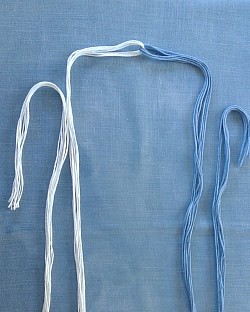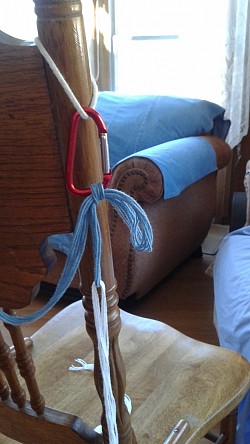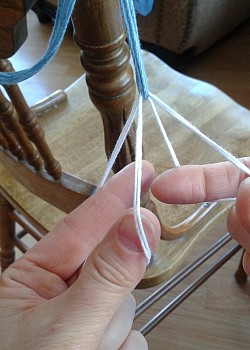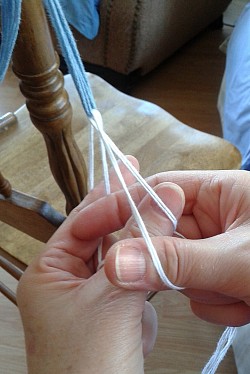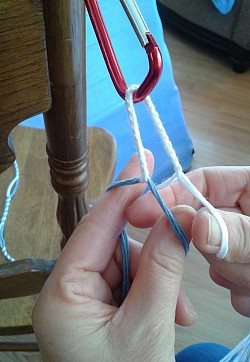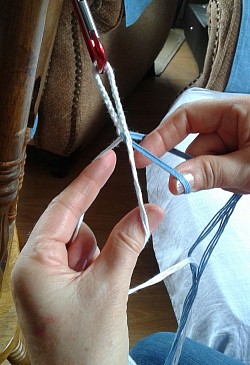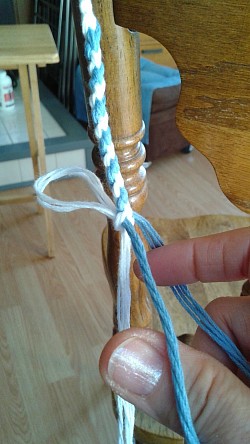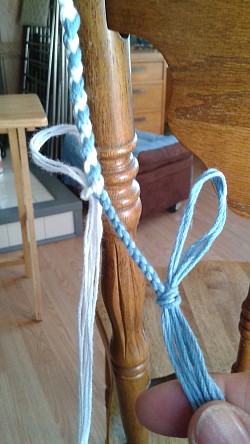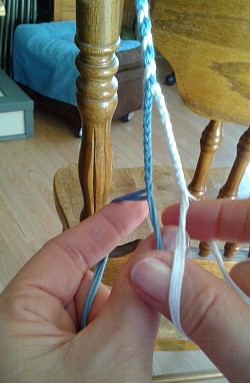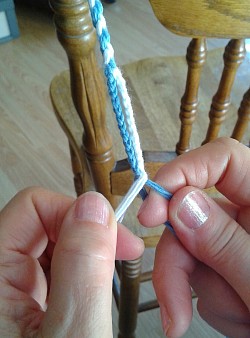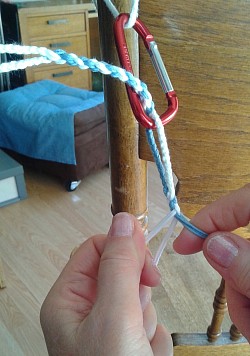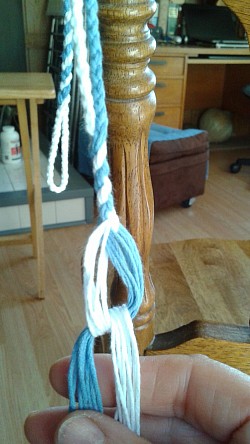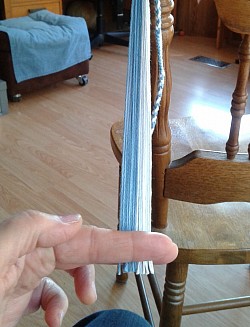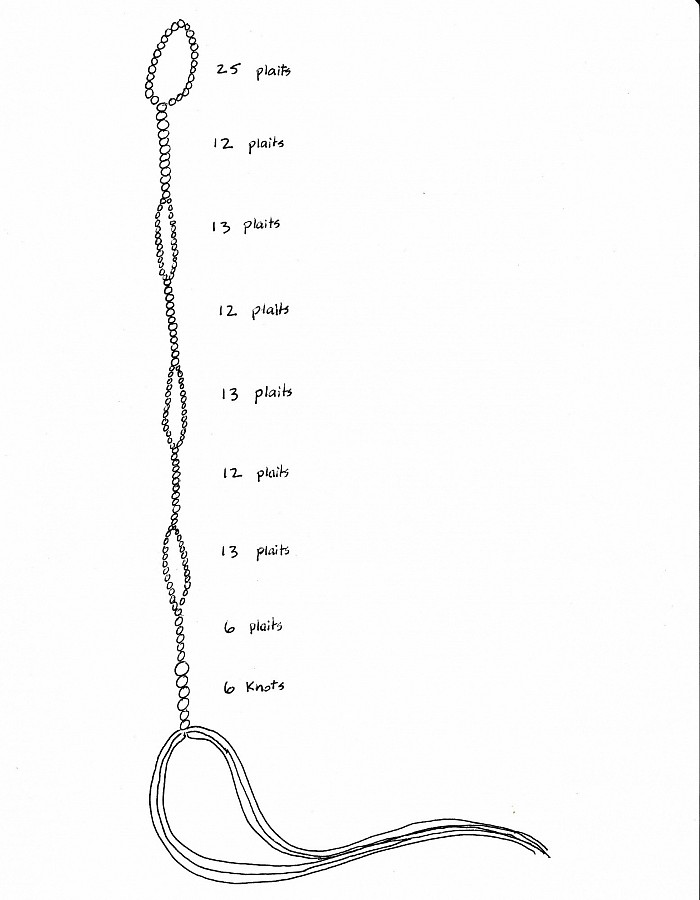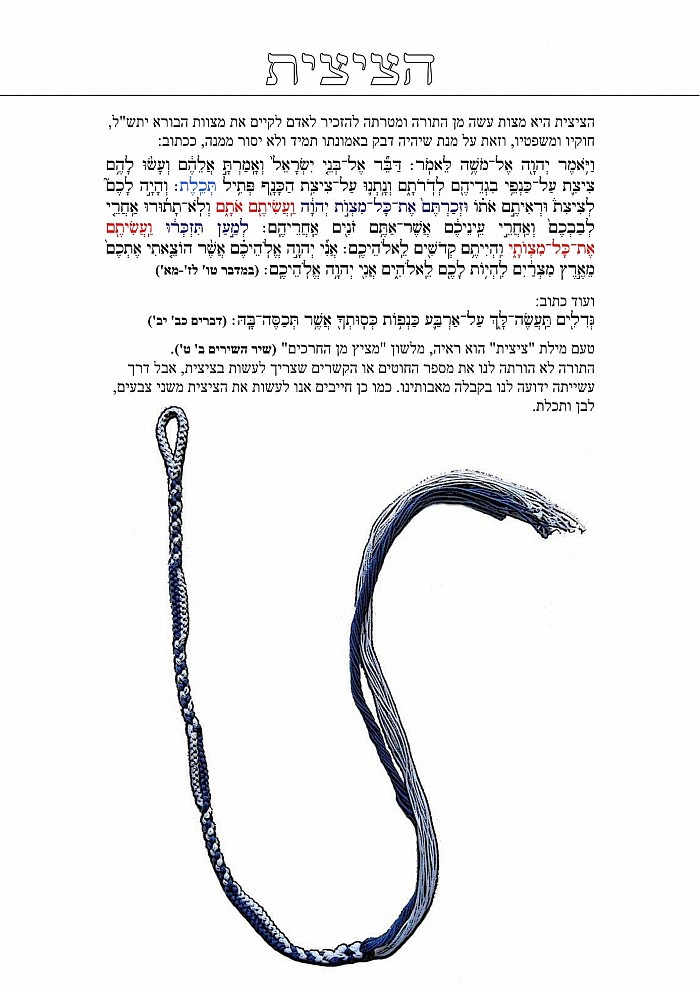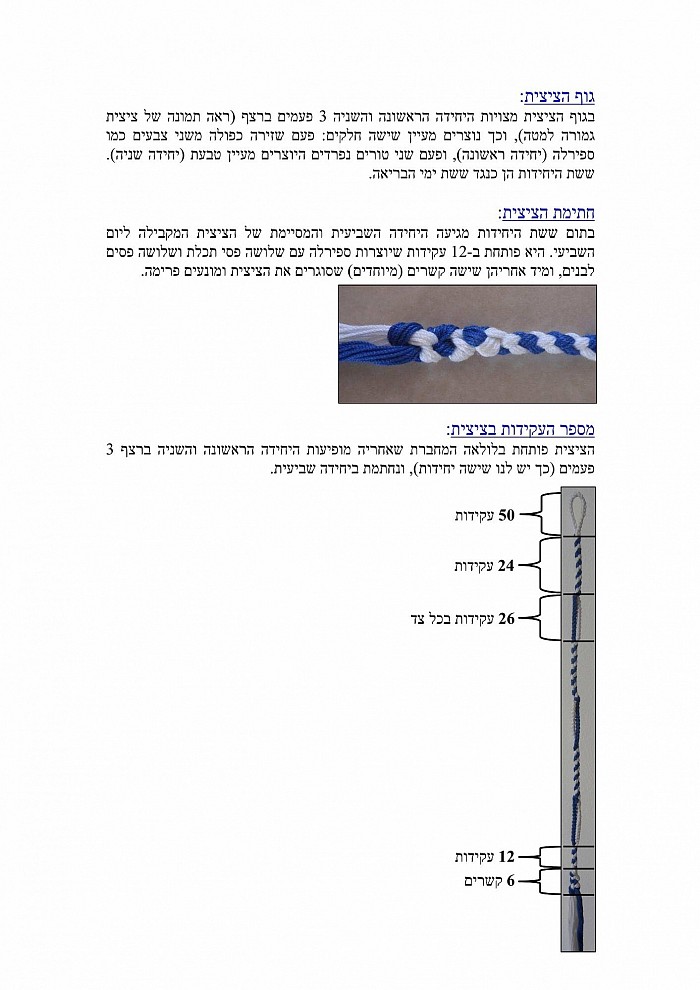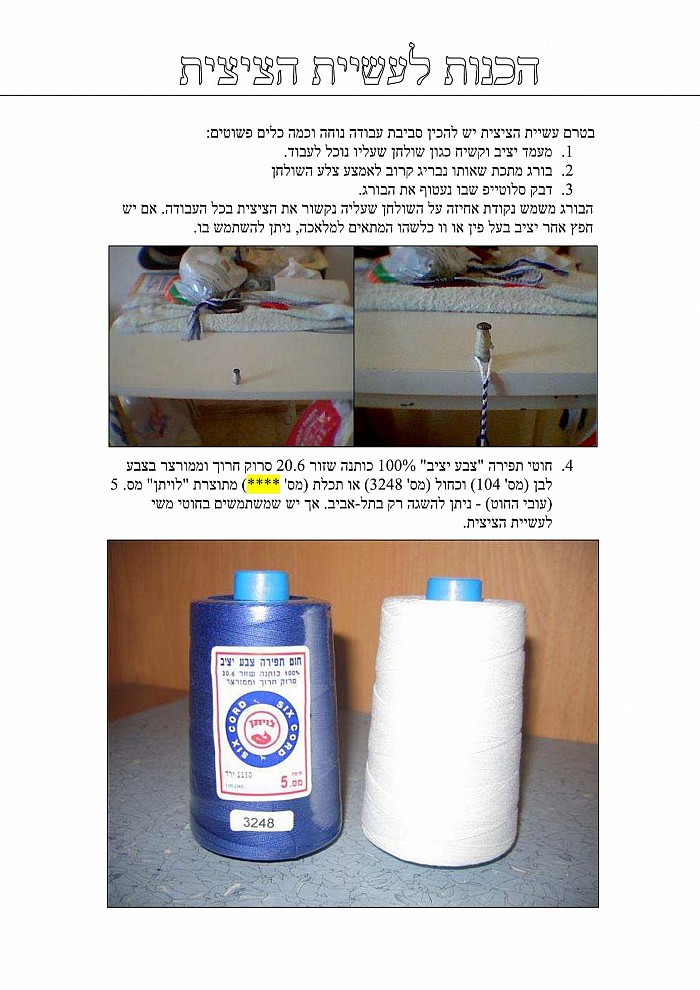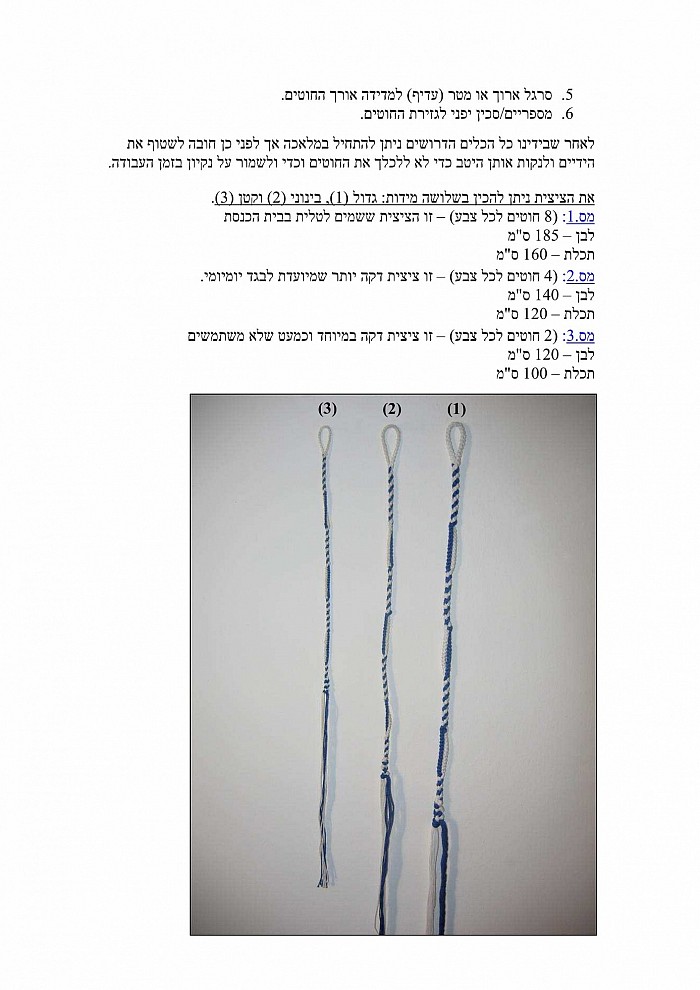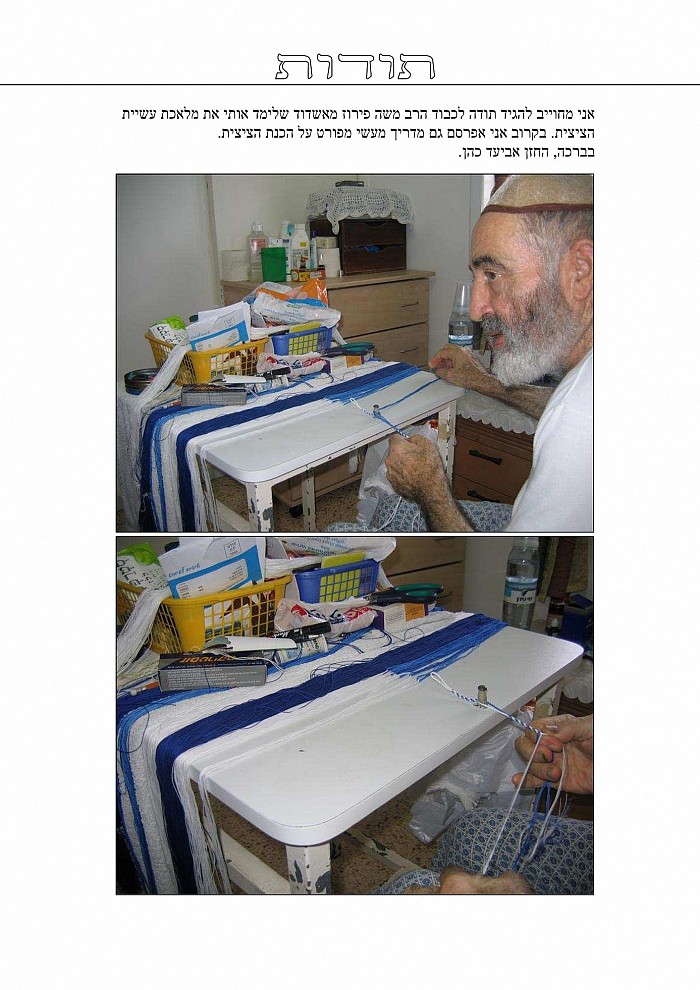Pattern for Tying the Traditional Karaite Sisith
Before attempting this, please make sure you are familiar with The Method of Plaiting for Traditional Karaite Sisith
Depending on the strings you are using, you may have to adjust the cut length to get the length you want. I use linen strings whose thickness is 'Sport Weight'.
For my linen strings I cut:
Gadol or large size - 16 white strings at 185 cm or 73 inches long
16 blue strings at 160 cm or 63 inches long
Qatan or medium - 8 white strings at 140 cm or 55 inches
8 blue strings at 126 cm or 50 inches
The pictures directly below illustrate the steps I am about to give you here. I invite you to click on the pictures to see a brighter, clearer image.
There is a hand drawn diagram showing the tying pattern, below these pictures.
The pattern for both sizes; gadol and qatan, of the Traditional Karaite sisith written out is:
Plait; 25 - 12 - 13- 12 - 13 - 12 - 13 - 6, Then Knot 6
Link the blue and white strings together and attach the blue strings to what ever you are using to anchor your strings for tying.
You start with the white strings, divide these into four groups of white, with 2 groups in each hand. Your first move can be just the pass through without the twist, and this counts as the first of 25 plaits.
Next pass, twist your wrists, readjust your fingers and pass the strings through, each to the opposite hand. Continue until 25 pass throughs are complete. This forms the top loop.
You next untie the blue, adjust the strings on the hook so that the start of the blue and the bottom of the white plaiting are even and get ready to plait the blue and the white together. So, put the white in the left hand, divided into two groups of white, and the blue in the right hand, divided into two groups of blue. Now plait 12. If you lose count, you can count the blue alternating with the white bumps to equal 12. Then secure the white strings, with a knot, or a twist tie, and plait 13 with the blue strings and secure. Then take the white strings and do the same.
Next, repeat plaiting the blue and white together for 12. Continue like this till you have 3 sets of 12, and 3 sets of 13.
Finish by plaiting the blue and white strings together for only 6 plaits and then take the blue and white and tie them in a single knot, 6 times.
The bottom lengths of string can be trimmed to equal about 1/3 of the total length of the entire sisith. The plaited part is 2/3 and the bottom strings are 1/3. Or they can be left longer if you prefer.
Karaite Traditional Pattern from Israel
The following is a PDF that I wanted to preserve and make available to be viewed by any one interested. It was made featuring the late Hakham Moshe, ben Avraham, Firrouz, OBM. He was born in Cairo.
In this PDF, on page 3, is a diagram of the official pattern for Traditional Karaite sisith. Note that the number of plaits is double what I have given. This is because they are counting two, (one for the set of strings in the left hand and one for the set of strings in the right hand) for every pass through. The knot is actually 6 and is not double, but when done looks like 3 large knots.

